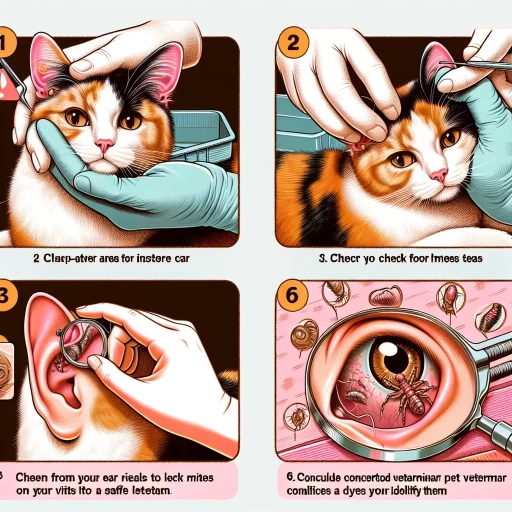How To Check For Ear Mites In Cats

Understanding Ear Mites in Cats
The Lifecycle and Symptoms of Ear Mites in Cats
Understanding the lifecycle and symptoms of ear mites in cats is critical before learning how to check for them. Unlike other parasites that live on the skin, ear mites are tiny arachnids that usually crawl around the surface of the cat's ear canal causing discomfort. During their 21 days life cycle, they feed, breed, and lay eggs. Symptoms of ear mite infestation include excessive scratching, redness, head shaking, a black or brown waxy secretion in the ear canal, and a strong, unpleasant odor.
Factors Contributing to Ear Mite Infestation
There are several factors that make your cat susceptible to ear mite infestations. Being in direct contact with an infested animal tops the list. The mites can move from one animal to another during social interactions or fights. Other factors include your cat’s living conditions – outdoor cats are more prone to mites, age – kittens and young cats are more susceptible, and lack of regular ear cleaning.
How Ear Mites Affect Your Cats
Ear mites may seem harmless, but they can cause considerable discomfort and health issues for your cat if not treated. In addition to the itching and inflammation, a heavy infestation can cause so much irritation that your cat may scratch its ear leading to a hematoma (blood-filled blister). If left untreated, the cat’s outer ear or eardrum may also get damaged, and in severe cases, it can cause deafness.
How to Check for Ear Mites in Cats
Detecting the Signs
The first step on how to check for ear mites in cats is detecting the symptoms. As mentioned earlier, signs include excessive scratching around the ears, shaking of the head, redness, and inflammation of the ear canal. If your cat shows any of these signs, chances are it may be infested with ear mites.
Physical Examination
A physical examination is the most common way to check for ear mites in cats. First, examine the outer part of the ear for any signs of redness or inflammation, then look into the ear canal for a black or brown waxy buildup. This dark-colored discharge is often compared to coffee grounds and is a major indicator that your cat may be suffering from ear mites. However, remember that a heavy discharge could also be a sign of bacterial or yeast infection, not mites.
Ear Swab and Microscopic Examination
If you’re not sure about the presence of ear mites, the best way to confirm is by taking a sample of the ear discharge and examining it under a microscope. The mites are clearly visible under a microscope and their presence can confirm the infestation. However, a vet's aid is needed as this requires expertise.
Treating Ear Mite Infestation
Medication
The most common mode of treatment for ear mites in cats is medication. Medicated ear drops that contain an insecticide to kill the mites are usually prescribed by the vet. These drops are applied directly to the ear, and most treatments are effective within a week.
Cleaning
Before starting the medication, the vet may clean your cats’ ears using a special cleaning solution. This helps to remove the wax and debris that make the ear drops less effective. Cleaning also helps to relieve some of the symptoms of ear mite infestation like itching and inflammation.
Preventing Re-infestation
Preventing re-infestation is as important as treating the existing mite infestation. This can be achieved by isolating the infested cat from other cats until you’re sure the mites are gone, keeping your cats indoors away from infested animals, and regular ear cleaning.